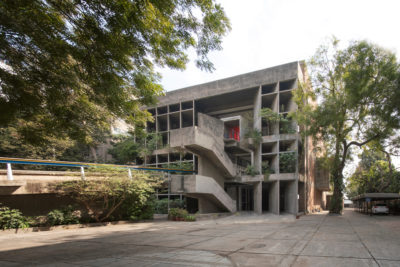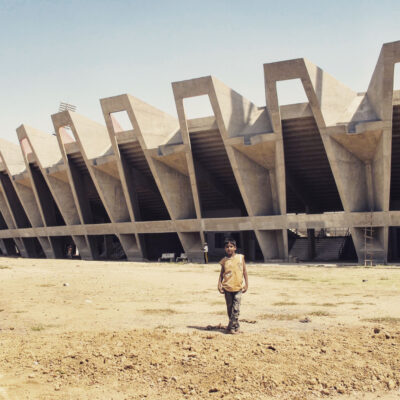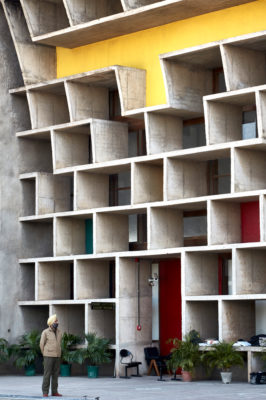Edmund Sumner: Another great artist gets behind #artistsupportpledge
Sometimes the simplest ideas are the most effective. The creative community has been hit hard by lockdown and an initiative originally conceived to give artists more visibility evolved into a lifeline. Now it’s looking to the future beyond Covid19
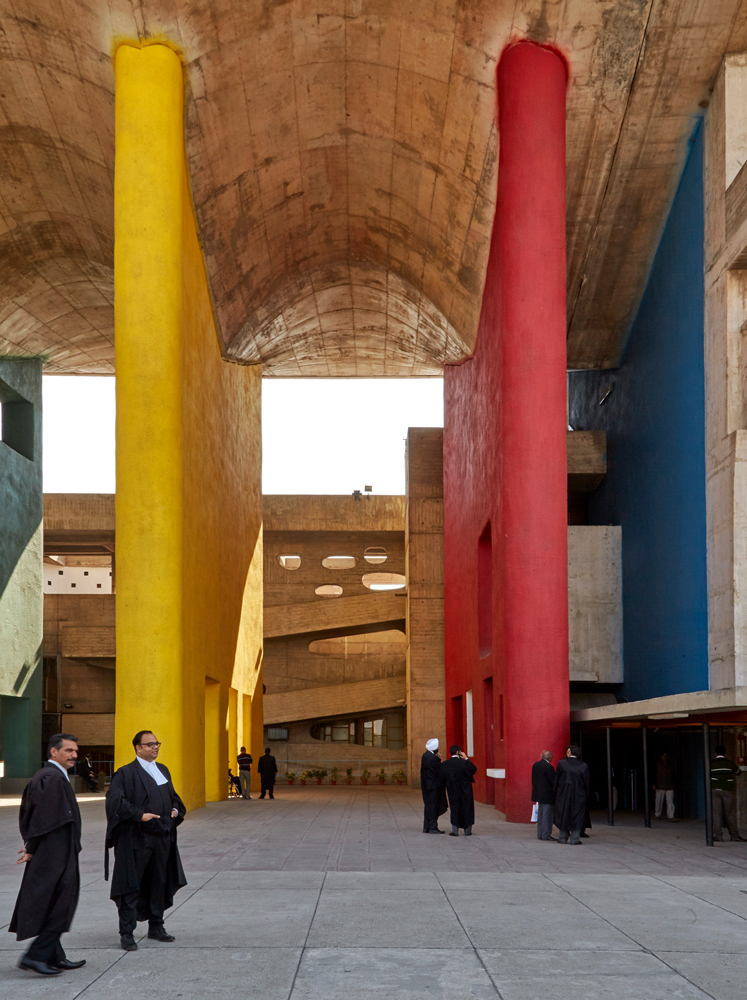
Corbusier’s Chandigarh, the High Court ©Edmund Sumner
“What we are putting out into the world is a movement, not a business. The formula is simple: you give generously, you receive gratefully and you give back. That’s it.” Founder, artist, Matthew Burroughs
How it works:
An artist posts images of their work to sell for no more than £200 each (not including shipping). Every time the artist reaches £1000 of sales she or he pledges to buy another artist/s work for £200.
Edmund Sumner is an architectural photographer who’s worked with everyone from Tadao Ando to the V&A and Burberry. In addition to his domestic work, Edmund is often to be found shooting in India, Japan, Mexico, Middle East and the USA. Like many, Edmund has some unplanned time to reflect on his work.
“During this strange time of crisis, I have more time to look back properly and find myself thinking in a different way about the places I have visited and the images I have created’.
But Edmund is doing more than reflect. He’s looking to his following of fans and collectors to help in the #artistsupportpledge “I’m selling prints through a wonderful initiative.” In the midst of an unprecedented health crisis, people are rallying to give support to artists. The win-win part is that as well as meaningfully supporting the project, you can acquire an Edmund Sumner print at a great price.
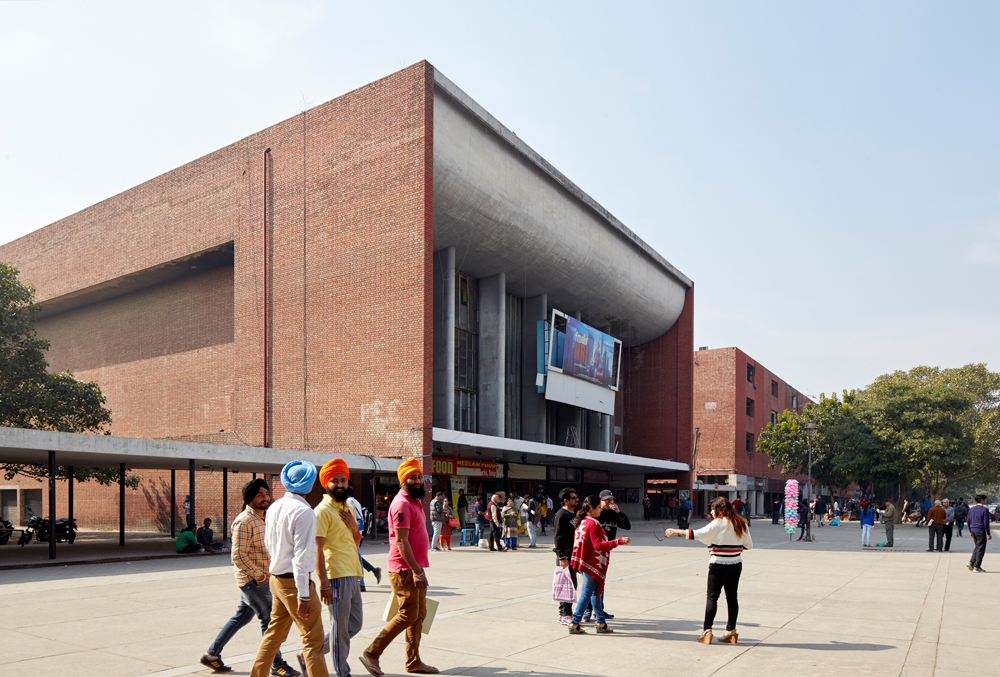
The Neelam Theatre, a cinema, in Chandigarh ©Edmund Sumner
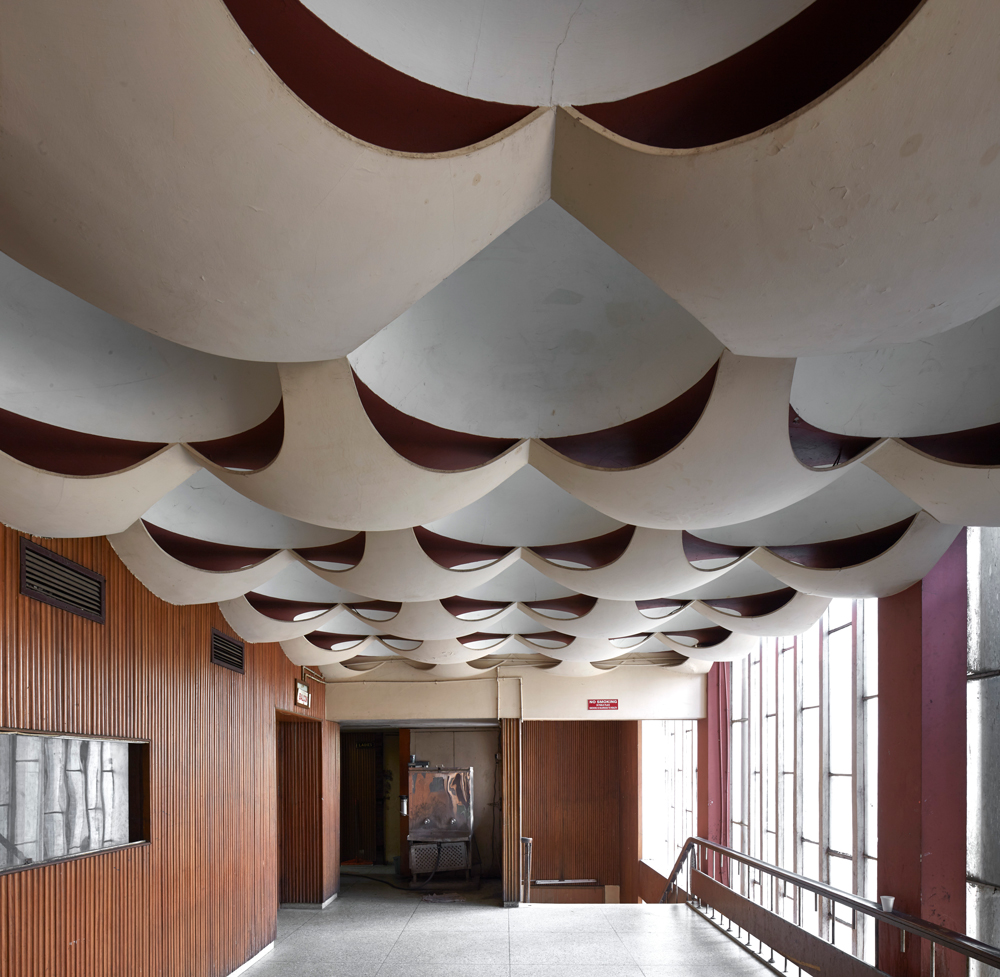
A lobby of the Neelam Theatre, cinema in Chandigarh ©Edmund Sumner
Greyscape fell for Edmund’s work when we saw his beautiful photographs of that jewel, Chandigarh. These images were taken in 2017 on a visit to the Neelam Theatre cinema in Chandigarh. The cinema was designed by Adiyta Prakash under Le Corbusier.
Chandigarh
Edmund told us,
“I’d long heard there were two cinemas by Le Corbusier in Candigarh but there weren’t many images and it wasn’t even clear if they were still open. On finding the Neelam Cinema, the manager seemed genuinely baffled but flattered that I wanted to take pictures and gave me permission to photograph the cinema on the condition that I would shoot only interiors in the 20-minute interval between films. Indian films are very long so I waited all day. I remember every minute of the waiting period like it was yesterday.”
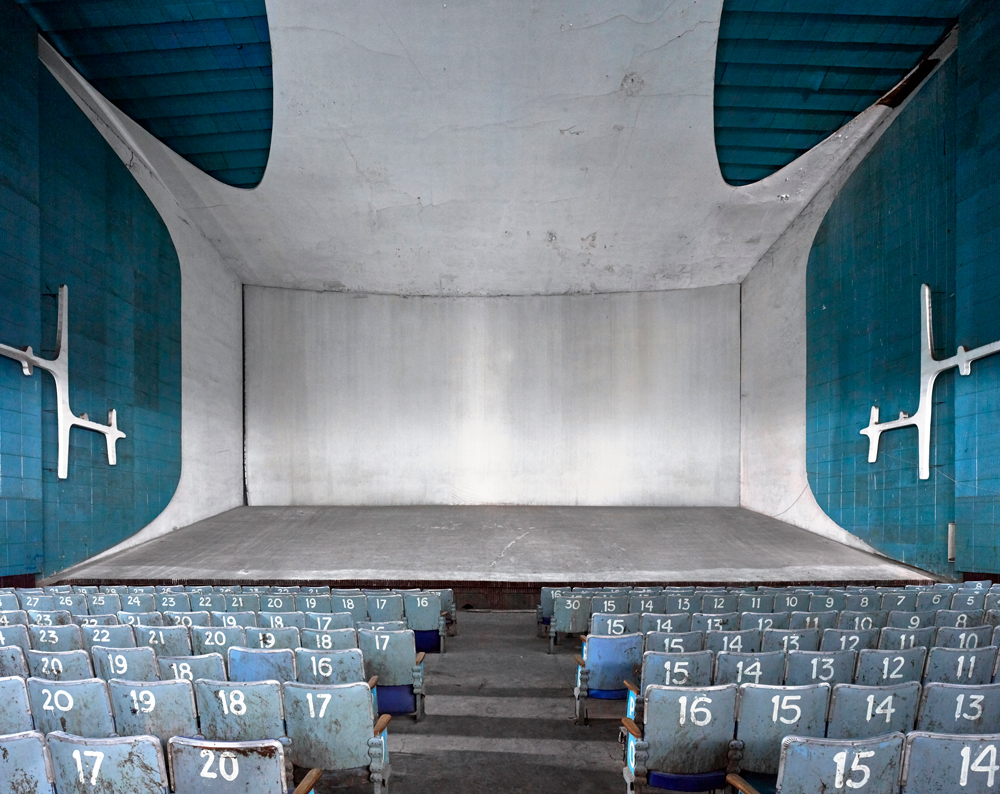
View from the audience seats in the Neelam Theatre, Chandigarh’s cinema ©Edmund Sumner
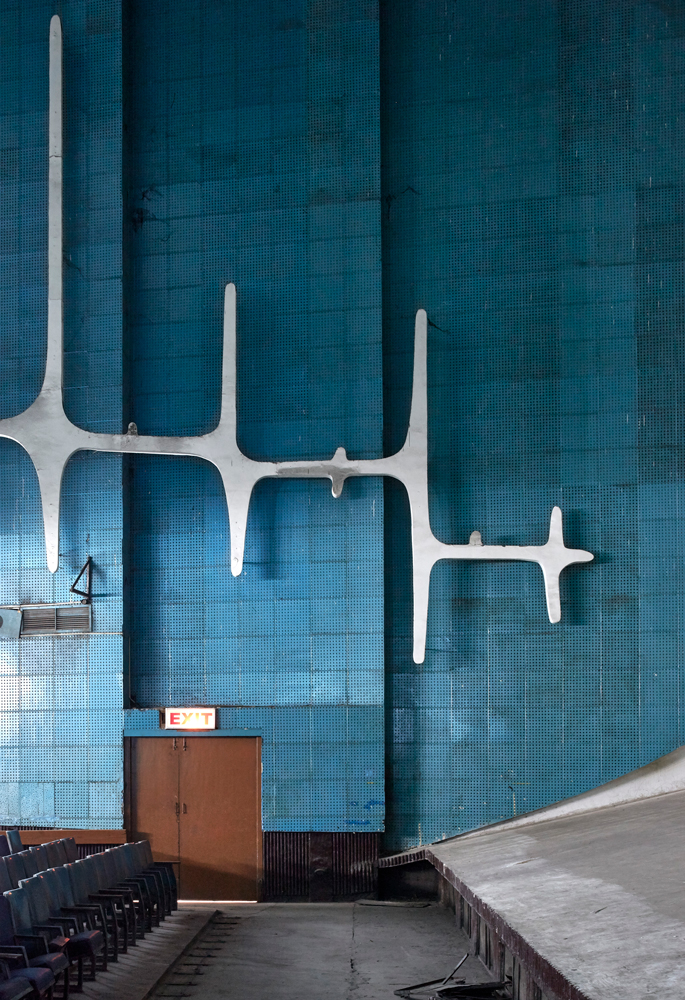
Neelam Cinema ©Edmund Sumner
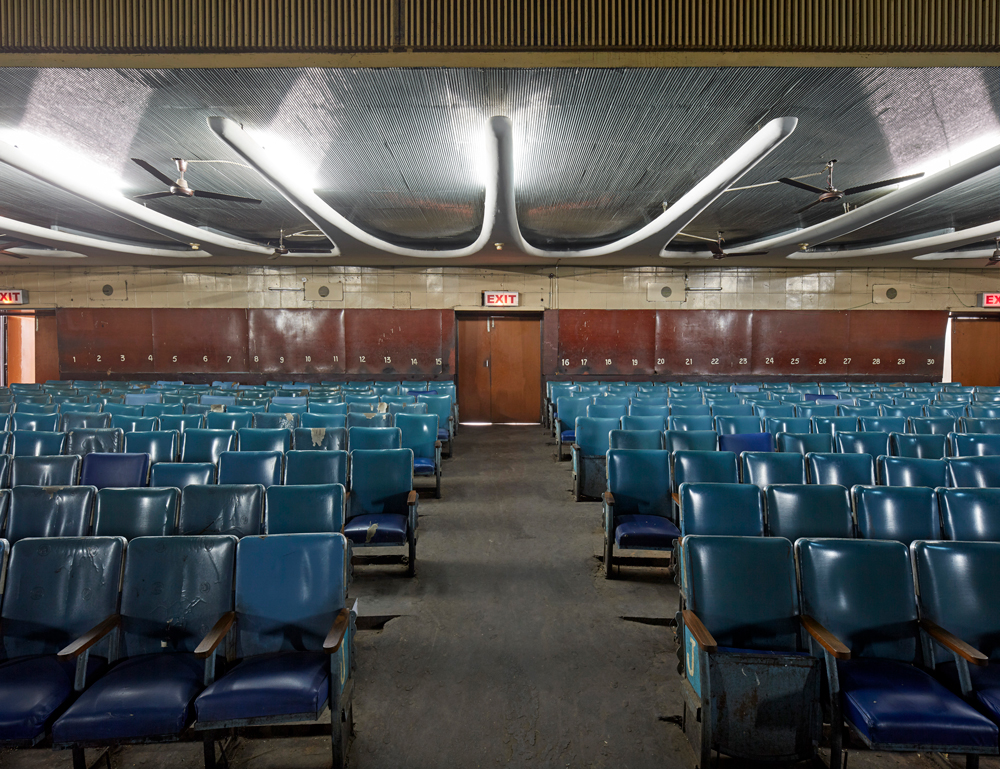
Interior of the Neelam Theatre cinema in Chandigarh ©Edmund Sumner
The building formally named the Palace of Justice but commonly called the High Court was designed by Le Corbusier. Finished in 1952, it serves the states of Punjab and Haryana. Built in the very earliest days of India’s independence, here was a statement of the country’s commitment to the rule of law. These pictures give a sense of how the building renders that pledge in concrete and reflects that the law is bigger than the individual.
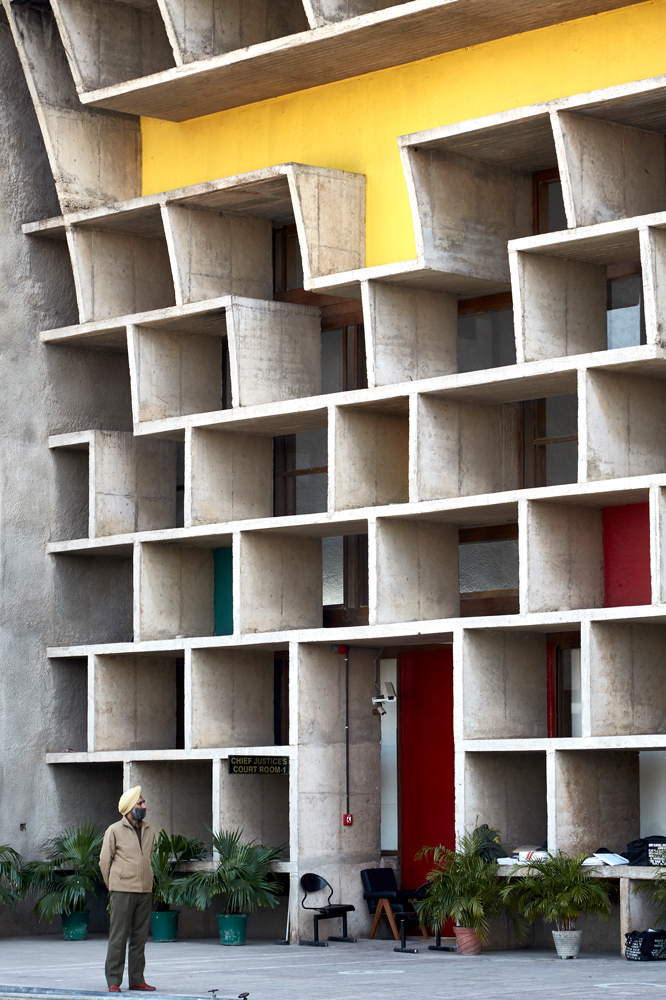
Corbusier’s inspiring Chandigarh designs, the High Court ©Edmund Sumner
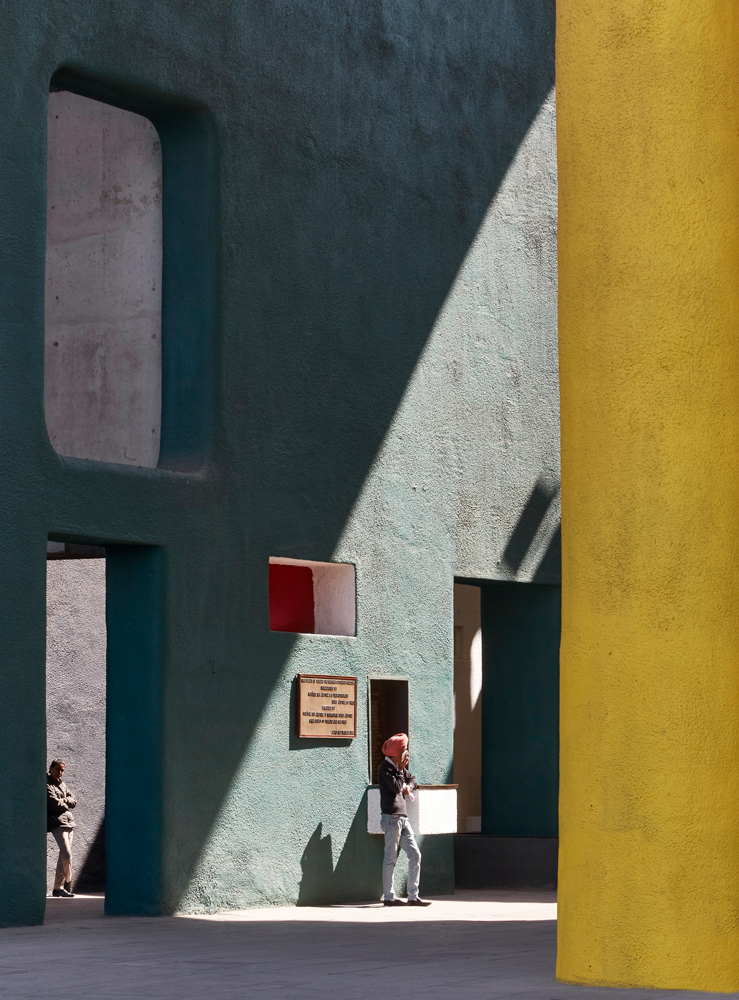
The High Court in India’s beautiful, Corbusier, Chandigarh ©Edmund Sumner
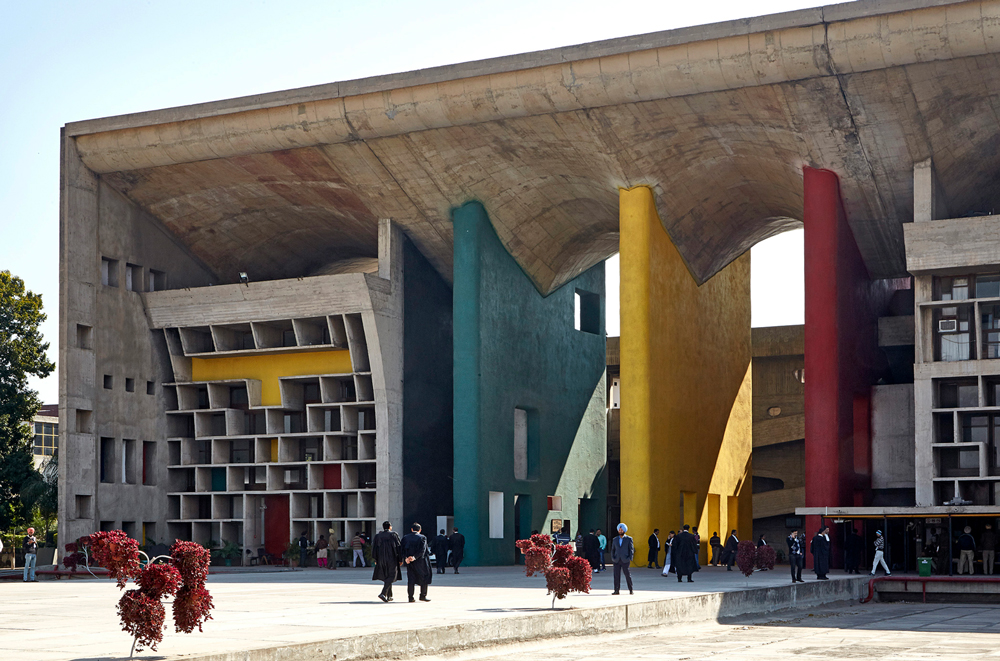
High Court of Punjab and Haryana, Chandigarh India Le Corbusier ©Edmund Sumner
Edmund’s photos of Inagawa Cemetary and the Waiting Room of Peckham Rye Station, both empty of figures, illustrate how he is more than just an architectural photographer:
‘I’m into hinting at more beyond the architectural image — looking at a deeper level at the life that might have gone on’
The photographs give a powerful impression of the people, in one, mourners, visitors to the Cemetary and in the other all the different people over so many years using that Waiting Room. We don’t need to see them in order to sense them.
In fact, Edmund explained that he’s not excited by images of deserted London, what moves him is images of homeless people sheltering at Heathrow.
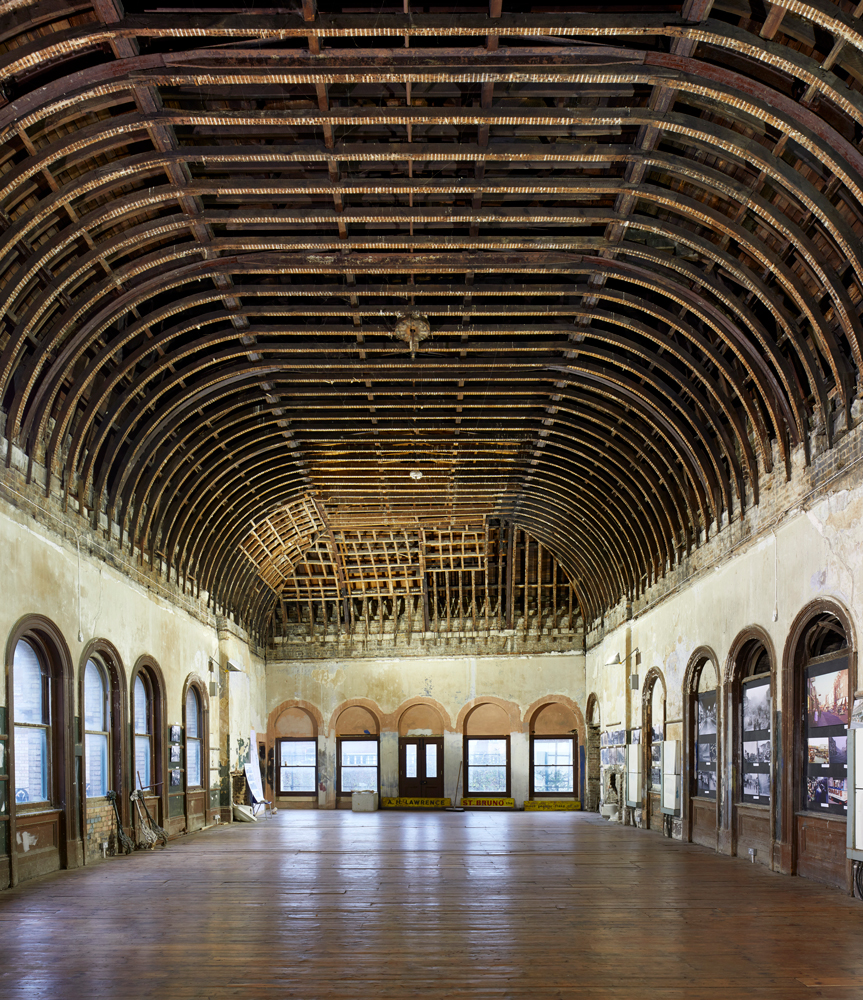
The atmospheric waiting room at Peckham Station ©Edmund Sumner
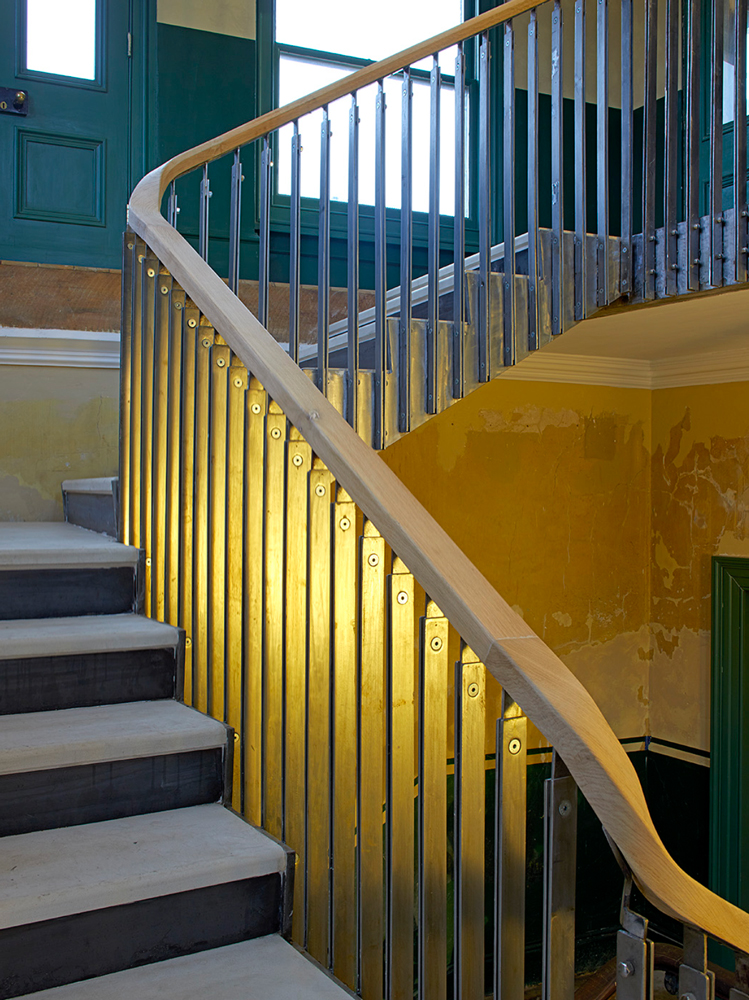
Staircase Peckham Rye Station ©Edmund Sumner
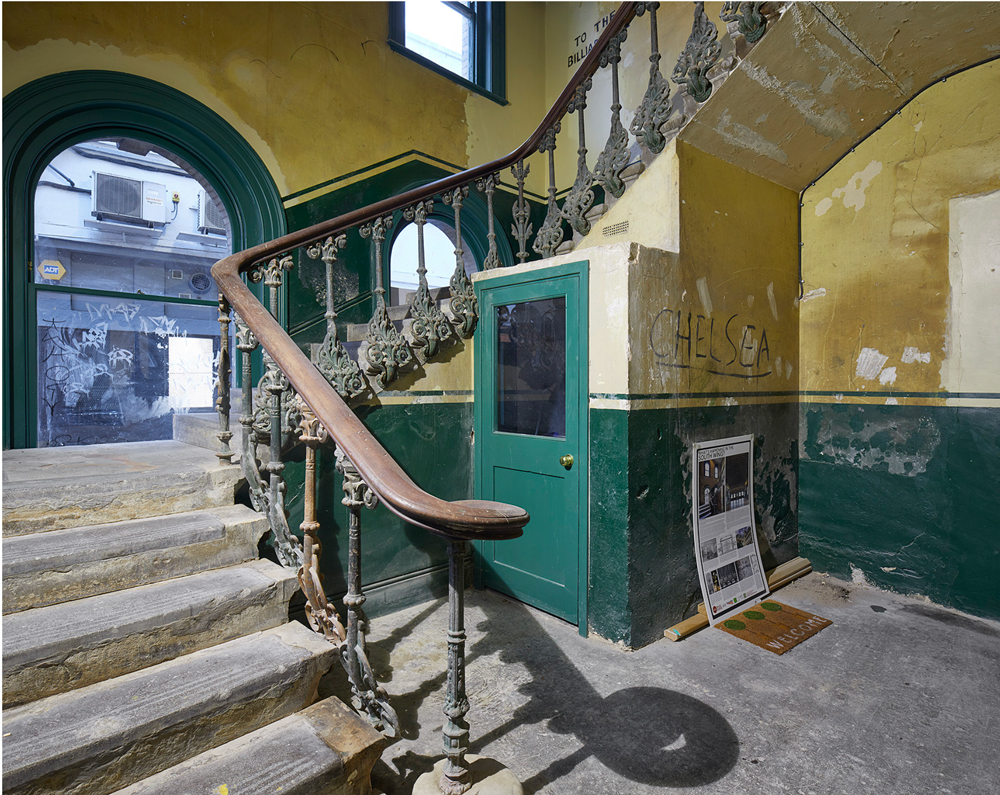
Disused staircase Peckham Rye Station Image ©Edmund Sumner
Victorian brio; the 1865 Peckham Rye Station’s Waiting Room affords us a glimpse of the golden age of rail travel. By 1962 it was a billiard hall. Edmund has captured its overpowering atmosphere of frayed grandeur.
The Prints
Edmund’s prints represent the more personal side to his work. Exploring architecture and modernism from different angles with a particular interest in psychogeography. His images are designed to encourage the viewer’s imagination of a found space. Solo shows include Human Landscapes at Browse and Darby Cork street in 2006, Outside the Box at Daiwa Foundation in 2008.
Greyscape Quick Fire
Which artists inspire you?
Bernd and Hilla Becher, the godparents of German rationalist photography. At the moment I am very taken by the work of Karam al-Masri, an Aleppo-born law student who started by photographing the anti-Assad demonstrations on his mobile phone. He’s grown into a striking war photographer. His perspective is that of an amateur becoming professional and as someone embedded in the conflict.
What’s the one that got away, the photo you wished you’d taken?
In Chandigarh, I was never able to get permission to photograph inside the debating chamber in the Assembly building
Where is your home town?
London
What are you watching during Lockdown?
I’m a David Lynch fan and I’m watching his work over and over again – third time watching the new Twin Peaks. We’re contemporaries, now, twenty years later with 90% of the original characters in the new series, we’ve all aged in real-time. Also trying to avoid watching too much news and I’m spending a lot of time experimenting with video, which I have become increasingly interested in. I’m also a bit of an accidental plane-spotter or lack of at the moment.
What’s your favourite local dish?
Very taken with the Brick Lane Beigel Bake for a hot cup of tea, a salt beef bagel and apple turnover
The first place you’ll visit when Lockdown ends?
The pub, not that I drink but I am an observer of places and spaces. I’m well suited to isolation as my job is solitary and I’ve worked on a zero-hours basis. Photography is a microcosm within a macrocosm
Publications
Include Architecture of Eden (Transworld, 2004), New Architecture in Japan(Merrell, 2010), Architecture of the Olympics (Wiley, 2012) and The Indian House (Thames and Hudson 2020).
How to contact Edmund and see his art:
Instagram @edmundsumner.
Visit Edmund’s website to see photographs and prints for sale in this project
News updates from Edmund here
Twitter: @EdmundSumner




